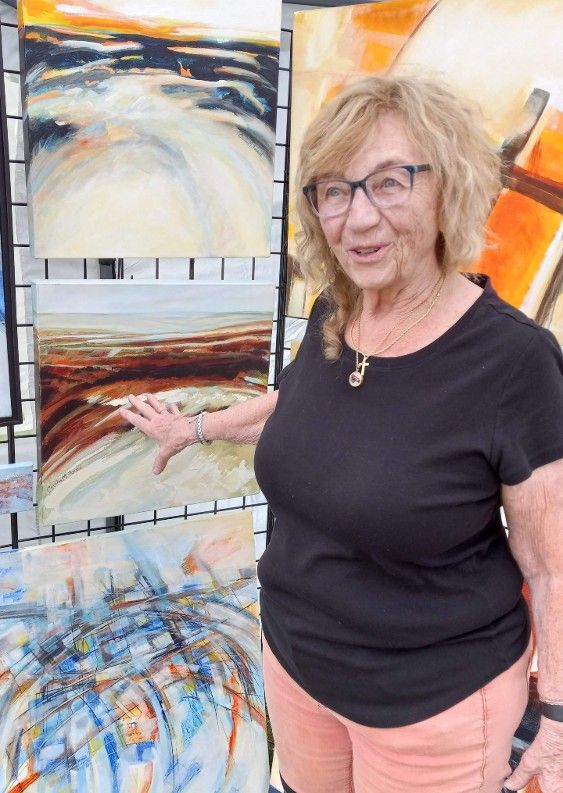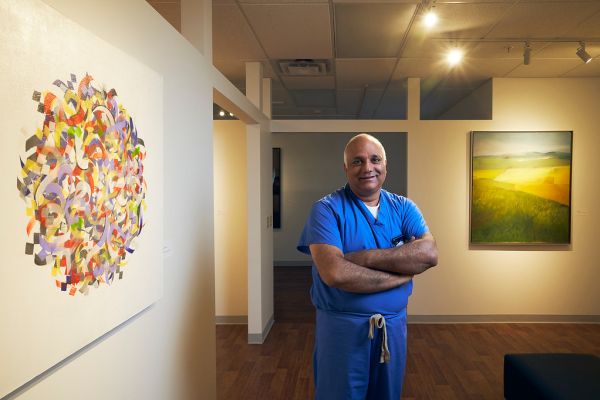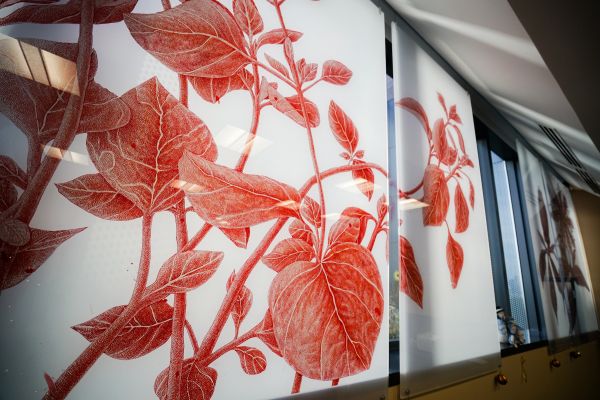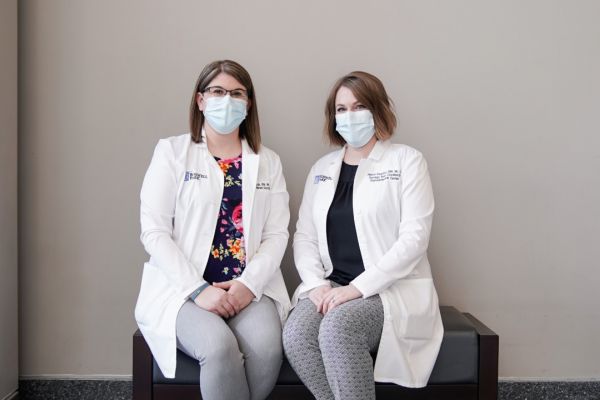Some art is too direct and powerful to be painted with brushes. Cecilia Farrell, a painter who works predominantly in acrylics, prefers to use sharp edges: credit cards and razor blades.
As a child, she loved painting but didn’t have access to brushes, so she used what was around. “I would take a bar of soap and cut a horse and make a horse’s head. I would take a potato and use a clothespin to put a cloth over it and make a face on it. That was before Mr. Potato Head was available, and I’d do a little puppet show for my class. When you have a talent and a knack for something, you have to keep doing it. It was a compulsion.”
Her need to create was so big, she moved from small canvasses to larger ones, some measuring five feet in height, including a series she painted while nursing her husband through his successful treatment for Hodgkin lymphoma before he passed away from a bout with pneumonia. “One painting had bright oranges and lots of anger in it. He didn’t like that one. I painted another, with soft grays and blues, and he liked that one. After he passed, I started another one, but it was very spooky and scary. It was reds and blacks.” She entered all three for consideration into a national show, noting that “you’re lucky if you get in one ever,” and was stunned to learn all three were not just accepted, but won first place.
A pain that wouldn’t go away
Cecilia moved back to Eden, New York, from North Carolina to be closer to her adult children and grandchildren, paintings and supplies in tow. When she started to experience some stomach pain, doctors were quick to attribute it to a recent attack of shingles that had caused some nerve damage. The pain persisted for a year before another doctor suggested she have her gallbladder removed, but the pain continued, now attributed to her recent surgery.
Determined to find the root cause of her pain, Cecilia found another physician and told her about the years of pain. This time, the doctor ran a battery of tests, including scheduling a biopsy at Roswell Park Comprehensive Cancer Center. The test results provided Cecilia with the clarity she’d been fighting for: a tumor was found on her pancreas but had not spread. Under the care of gastrointestinal surgeon Leonid Cherkassky, MD, medical oncologist Renuka Iyer, MD and gastroenterologist Andrew Bain, MD, a large portion of her pancreas and spleen were removed, along with 21 lymph nodes – none of which contained any cancerous cells.
“One of the doctors said he’d never seen anything like it before,” she says. As of her most recent appointment three months ago, there’s been no indication the cancer has returned after 15 months. Cecilia had chemotherapy as part of her treatment and worked with palliative medicine specialist Desi Carozza, MD, to help with the pain from her shingles.
Cecilia knows she’s one of the lucky ones. “I’ve lost many, many friends to cancer, including some to cancer of the pancreas,” she says. “It’s been amazing. After I stopped the chemo, I was still tired and sore, but I was still painting.”
A return to art
Painting has been her creative outlet for so long and it’s been a healing tool as well. The sharp angles and edges of her chosen tools allow her to create very straight, precise lines, but she knows how to manipulate them to form the occasional curve as well. Her work is well regarded: She has pieces submitted to competitive shows in North Carolina and local shows in Western New York.
She’s also gained a fan of her artwork in her primary physician, Dr. Iyer, MD, who went out to see Cecilia during a recent show in East Aurora.
“We have come far in treating pancreatic cancer and having people like her go back to doing what they love are inspiring to others fighting a tough disease,” Dr. Iyer says. “Her art is stunning. I feel lucky I got to be part of her journey and that of many others who needed hope.”
Editor’s Note: Cancer patient outcomes and experiences may vary, even for those with the same type of cancer. An individual patient’s story should not be used as a prediction of how another patient will respond to treatment. Roswell Park is transparent about the survival rates of our patients as compared to national standards, and provides this information, when available, within the cancer type sections of this website.





